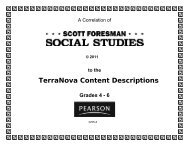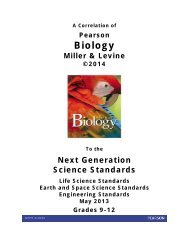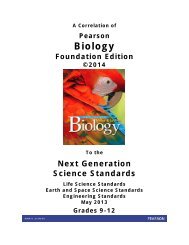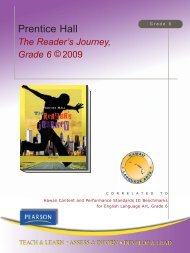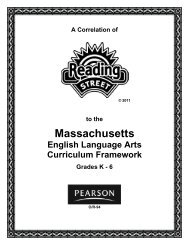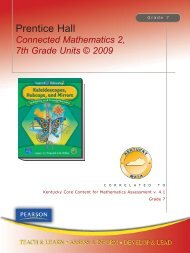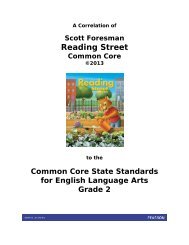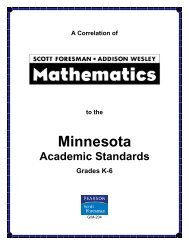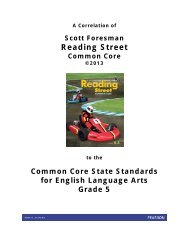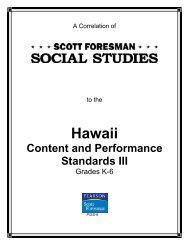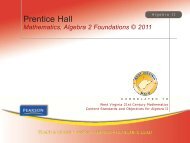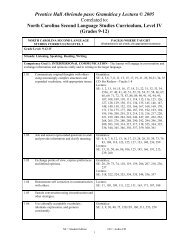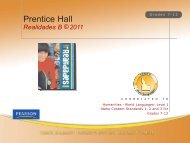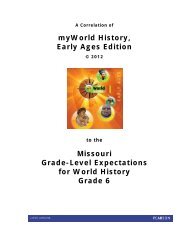Scott Foresman Reading Street - Pearson
Scott Foresman Reading Street - Pearson
Scott Foresman Reading Street - Pearson
Create successful ePaper yourself
Turn your PDF publications into a flip-book with our unique Google optimized e-Paper software.
<strong>Scott</strong> <strong>Foresman</strong> <strong>Reading</strong> <strong>Street</strong> © 2008to theCommon Core Georgia Performance Standards (CCGPS)Grade 5Common Core GeorgiaPerformance Standards – Grade 5Key Ideas and DetailsELACC5RL1: Quote accurately from a textwhen explaining what the text saysexplicitly and when drawing inferences fromthe text.Fifth Grade <strong>Reading</strong> Literary (RL)<strong>Scott</strong> <strong>Foresman</strong><strong>Reading</strong> <strong>Street</strong> © 2008SE: 248, 280, 408, 478TE 1: 28, 50; 2: 236, 243, 248; 3: 280;4: 408, 478The program provides Reader Responsequestions at the end of each StudentEdition selection and Strategy Self-Checkand Guiding Comprehension questions inthe Teacher’s Edition lessons for theselections. Students must cite textualevidence to support their answers to somequestions in these sections as well as tomake inferences and draw conclusions.(See, for example, TE 1: 28, 50.)ELACC5RL2: Determine a theme of astory, drama, or poem from details in thetext, including how characters in a story ordrama respond to challenges or how thespeaker in a poem reflects upon a topic;summarize the text.SE: 68–69, 75, 78, 81, 84, 236, 240, 470,582–583, 593, 596–597, 598, 601TE 1: 32, 62, 68–69, 74, 75, 78, 80, 81,82, 84, 89b, DI•26, DI•27; 2: 156, 202,236, 237, 240, 246; 3: 278; 4: 406, 470,476; 5: 528, 582–583, 592, 593, 596,597, 598, 601, DI•36, DI•37; 6: 648, 694,746As part of their analysis of each literarywork, students are asked to summarize, orretell, the text. To do this, they are taughtto recognize the most important ideas inthe text; to identify the main literaryelements, including characters, settings,plot, and theme; and to describe thesebriefly in their own words. Students alsorelate selections to unit themes of theprogram as well as identify the story’stheme. (See, for example, SE: 84 andTE 1: 68–69.)SE = Student Edition4TE = Teacher’s Edition



